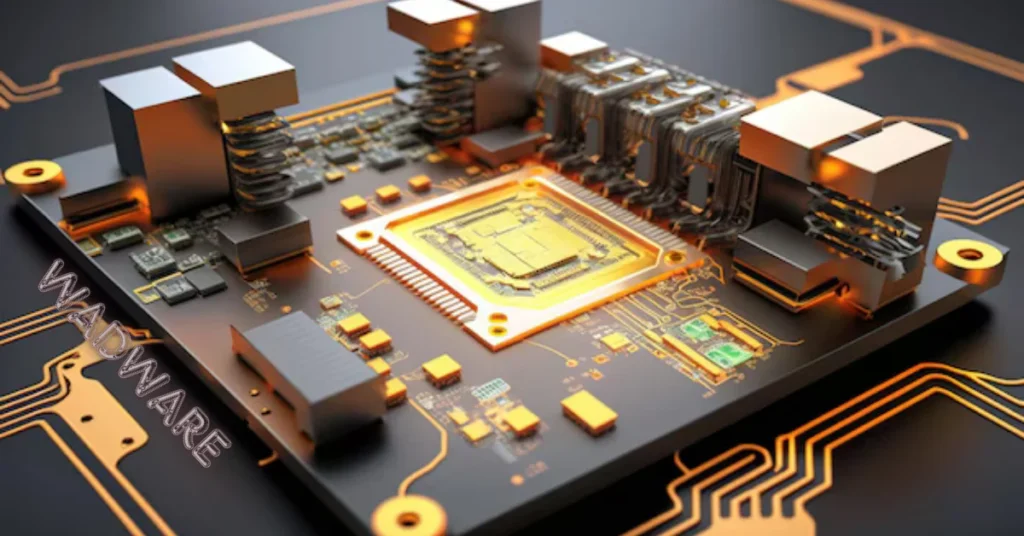Introduction to Wadware and its Concept
Imagine a world where hardware and software work in perfect harmony, seamlessly integrating to enhance our technology experience. Welcome to the realm of wadware—a term that encompasses this innovative fusion. It’s not just about creating devices or applications anymore; it’s about bridging gaps and breaking barriers. As we dive into the concept of wadware, we’ll explore its history, benefits, and real-world applications while examining how it shapes the future of technology. Join us on this enlightening journey as we uncover what makes wadware a game-changer in today’s digital landscape.
The History and Evolution of Wadware
Wadware emerged as a response to the growing need for cohesive interaction between hardware and software. Its roots can be traced back to early computing, where devices often operated in isolation. This disconnection led to inefficiencies that developers sought to address.
As technology advanced, so did the concepts behind wadware. The 1980s saw initial attempts at integration through more sophisticated programming interfaces. However, it wasn’t until the advent of IoT in the late 2000s that wadware truly began to flourish.
With smart devices becoming commonplace, manufacturers recognized the importance of seamless compatibility. This shift spurred innovations in both hardware design and software development aimed specifically at bridging gaps.
Today, wadware is not just a buzzword; it’s reshaping industries by creating unified ecosystems where every component works harmoniously together. Companies are now prioritizing this synergy as they build products for an increasingly interconnected world.
Benefits of Using Wadware in Technology
Wadware revolutionizes the way technology integrates hardware and software. This seamless combination enhances performance, making systems more efficient.
One major benefit is improved user experience. By aligning hardware capabilities with software needs, Wadware optimizes functionality for end-users. Tasks become smoother, faster, and more intuitive.
Cost-effectiveness also plays a significant role. Companies can reduce development time by using pre-integrated solutions. This leads to quicker deployments and less financial strain on resources.
Moreover, Wadware fosters innovation. Developers can focus on creating groundbreaking applications without worrying about compatibility issues between hardware and software layers.
Security is another crucial advantage. With tightly integrated systems, vulnerabilities are minimized as threats are managed holistically rather than piecemeal.
Scalability becomes effortless with Wadware solutions in place. Businesses can adapt their tech stacks as they grow without overhauling existing infrastructure entirely.
Examples of Successful Integration of Wadware
One striking example of successful wadware integration can be seen in smart home technology. Devices like the Nest Thermostat seamlessly blend hardware with software, enabling users to control heating and cooling via a smartphone app. This synergy enhances user experience through automation.
Another notable instance is in the automotive industry. Tesla’s electric vehicles utilize wadware to deliver real-time performance updates and remote diagnostics directly to drivers’ smartphones. This innovative approach not only improves vehicle management but also elevates customer satisfaction.
In healthcare, wearable devices such as fitness trackers exemplify effective wadware use. They gather data on physical activity and health metrics while providing insights through dedicated apps, empowering users to take charge of their well-being.
These examples highlight how wadware fosters innovation by creating cohesive ecosystems where hardware meets software for enhanced functionality and usability across various sectors.
Challenges and Limitations of Wadware
Wadware, while promising, faces several challenges. One significant hurdle is compatibility. Integrating hardware and software can lead to unforeseen issues that disrupt functionality.
Another limitation lies in the skill gap. Companies may struggle to find professionals who understand both realms deeply. This shortage hampers effective implementation of wadwares solutions.
Security concerns also loom large. As more devices become interconnected through wadwares, vulnerabilities increase. Hackers often seek ways to exploit these connections.
Cost implications cannot be ignored either. Developing tailored wadwares solutions demands a considerable investment of resources and time, which might deter smaller enterprises from adopting it.
The rapid pace of technological advancement means that today’s cutting-edge solution could quickly become obsolete tomorrow—making long-term planning tricky for organizations choosing to embrace wadwares systems.
Future Potential and Growth of Wadware
The future of wadware looks promising, with increasing interest from tech industries. As devices become smarter and more interconnected, the need for seamless hardware-software integration becomes essential.
Emerging technologies like IoT and AI are driving this evolution. Wadwares can enhance functionality by allowing hardware to adapt based on software updates in real-time. This adaptability opens doors for innovation that we haven’t yet fully explored.
Moreover, as consumer demand grows for personalized experiences, wadwares can play a crucial role. Tailoring devices to individual user preferences will not only improve satisfaction but also foster brand loyalty.
Investments in research and development will accelerate advancements in this field. Companies that embrace wadware stand to gain a competitive edge as they redefine how users interact with technology.
In essence, the next wave of technological growth could very well be anchored in effective wadwares solutions that bridge gaps while enhancing efficiency.
The Impact of Wadware on the Hardware-Software Divide
Wadwares is revolutionizing the relationship between hardware and software. Traditionally, these components operated in separate spheres. Now, they are beginning to merge seamlessly.
The integration of wadwares enables devices to become smarter and more adaptable. This evolution allows for real-time updates and modifications that enhance performance without requiring new physical components.
Moreover, developers can create solutions that respond dynamically to user needs. The once rigid boundaries are fading as Wadwares fosters a collaborative environment where hardware complements software capabilities perfectly.
This synergy also leads to better resource management. Companies can optimize their products while reducing waste associated with outdated technology.
As industries adopt this approach, innovation accelerates at an unprecedented pace. New possibilities emerge daily, reshaping how consumers interact with technology on every level.
Conclusion of the wadware
Wadware represents a significant shift in how we view the interplay between hardware and software. It has emerged as a vital solution that addresses many of the challenges posed by traditional systems.
As technology continues to advance, the possibilities for wadwares expand. Its integration into various sectors—from smart homes to healthcare—illustrates its versatility. Each successful implementation showcases how well-crafted combinations of hardware and software can lead to innovative solutions.
However, it is essential to recognize that wadwareS isn’t without its challenges. Compatibility issues and security concerns remain hurdles that developers must navigate carefully. With ongoing research and development, these limitations are being addressed, paving the way for more robust applications.
The future looks bright for wadwareS. As industries increasingly demand seamless interaction between devices and programs, this concept will likely become more pervasive. The growth potential is enormous, promising exciting advancements that could redefine our technological landscape.
Wadware stands at a crossroads where it has already begun altering perceptions about what constitutes effective tech solutions. Its role in bridging gaps highlights not just innovation but also collaboration within different fields of expertise—a testament to what can be achieved when hardware meets software harmoniously.
FAQs
What is “Wadware”?
Wadware refers to an innovative concept that seamlessly integrates hardware and software, creating cohesive technology ecosystems. It aims to enhance performance and usability by harmonizing traditionally separate components into unified systems.
How does Wadware revolutionize technology integration?
Wadware revolutionizes technology integration by bridging the gap between hardware and software. It allows for smoother functionality, real-time updates, and enhanced user experiences across various devices and applications.
What are the key benefits of using Wadware?
Using Wadware improves user experience through optimized functionality and performance alignment. It also promotes cost-effectiveness by reducing development time and enhancing security through holistic management of system vulnerabilities.
Can you provide examples of successful Wadware implementations?
Examples include smart home technologies like the Nest Thermostat, automotive applications in Tesla vehicles for remote diagnostics, and healthcare wearables such as fitness trackers. These illustrate how Wadware enhances functionality and user interaction.
What are the challenges associated with implementing Wadware?
Challenges include compatibility issues between hardware and software, the need for specialized skills in both domains, security risks from increased connectivity, and the initial investment required for development and deployment.







